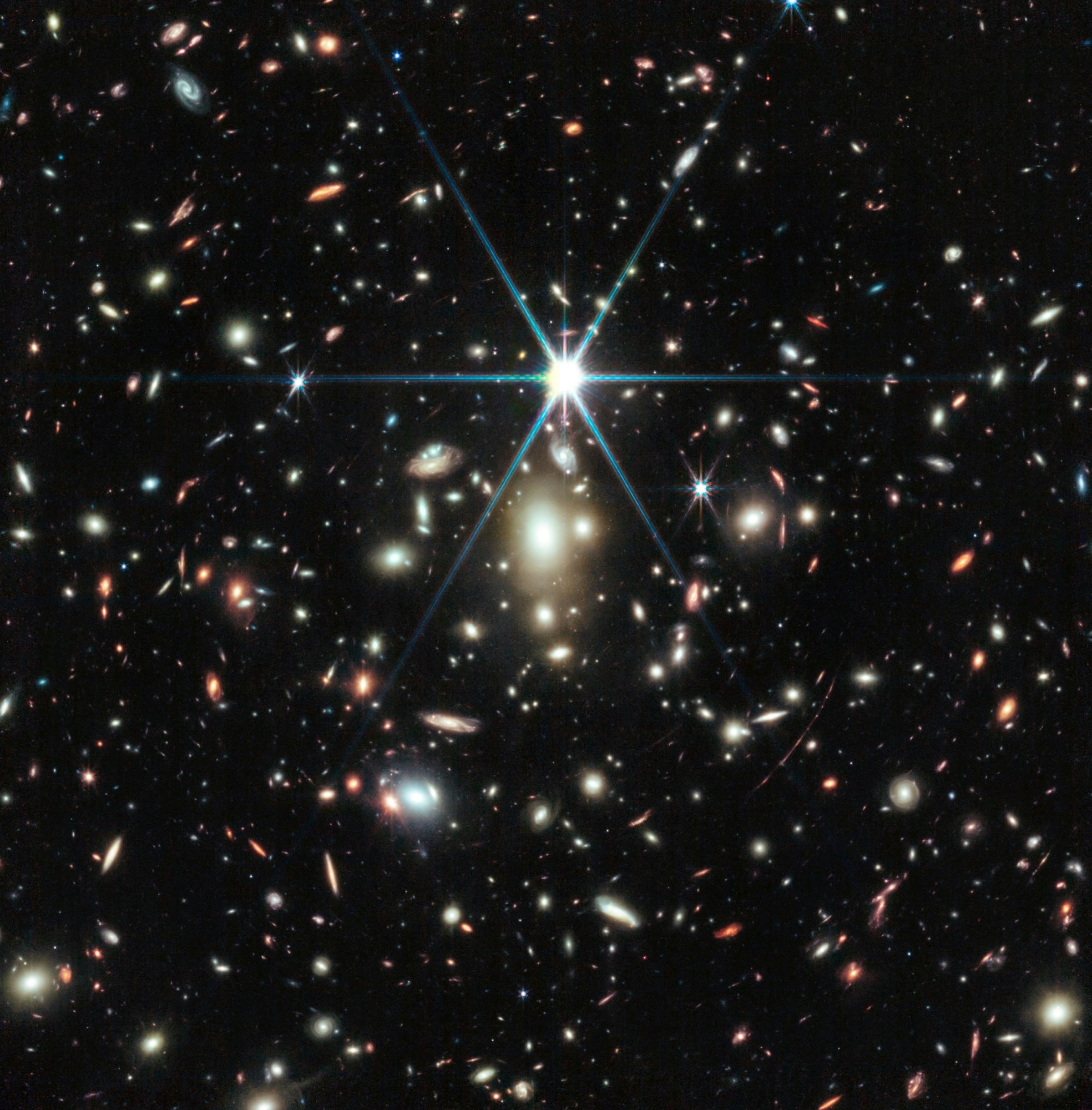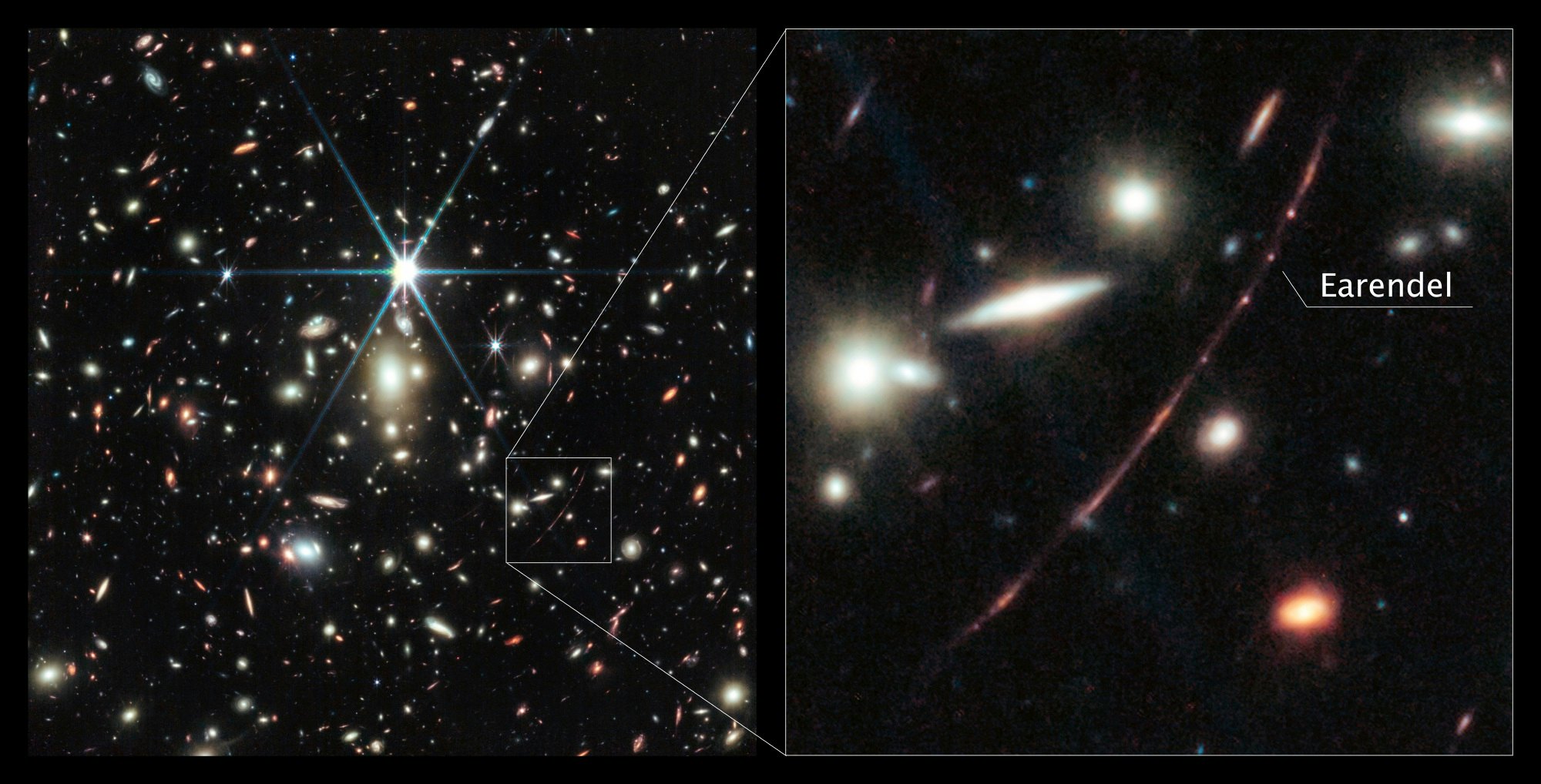
The oldest star astronomers have ever seen may have a little buddy, according to recent images from the James Webb Space Telescope (JWST).
Earendel is more than 12 billion light years away in a galaxy called the Sunrise Arc; the light that reecntly reached JWST’s mirrors left the distant galaxy in the first billion years after the Big Bang. Recent data from JWST suggests that Earendel may be a massive, bright star with a smaller, reddish companion.
Even Distant Stars Need Friends
In its first year of science, JWST has revealed a host of extremely distant galaxies. We know those galaxies are teeming with stars, but at those tremendous distances, even JWST can’t pick out individual stars; the galaxies appear as roundish blobs of light. Earendel is the most distant star astronomers have ever been able to identify, and it’s part of one of the most distant galaxies astronomers have ever been able to see in much detail, the Sunrise Arc.

Last year, the venerable Hubble Space Telescope was the first to spot Earendel as a bright point of light in a faraway galaxy whose image had been magnified four thousand times as its light passed through the gravitational lens of a massive galaxy cluster. Recently, JWST’s Near InfraRed Camera (NIRCam) revealed more detail about the bright, distant star.
Earendel is a brilliant blue star, several times more massive than our Sun, twice as hot, and more than a million times brighter. And like many of the massive stars astronomers have observed closer to home, distant Earendel may be part of a binary star system: a pair of stars orbiting a shared center of gravity. When astronomers examined the colors of Earendel’s light, they noticed something surprising:
“Astronomers think they see hints of a cooler, redder companion star,” says NASA in a recent announcement.”
A Detailed Look at a Distant Galaxy
Light from the distant Sunrise Arc galaxy has to pass through a massive cluster of galaxies, poetically named WHL0137-08. The galaxy cluster’s gravity warps spacetime around it, forcing the light to follow a curved path, like passing through a lens. As a result, the Sunrise Arc appears stretched into a thin arc, but it’s also magnified enough for JWST and Hubble to spot an individual massive star – along with a young star-forming nebula and a bright star cluster.
JWST’s Near InfraRed Spectrograph (NIRSpec) instrument also recently observed Earendel and its home galaxy. Astronomers hope that, once it’s been processed and analyzed, that data will enable them to calculate the precise distance to the Sunrise Arc and measure its chemical composition in more detail.







